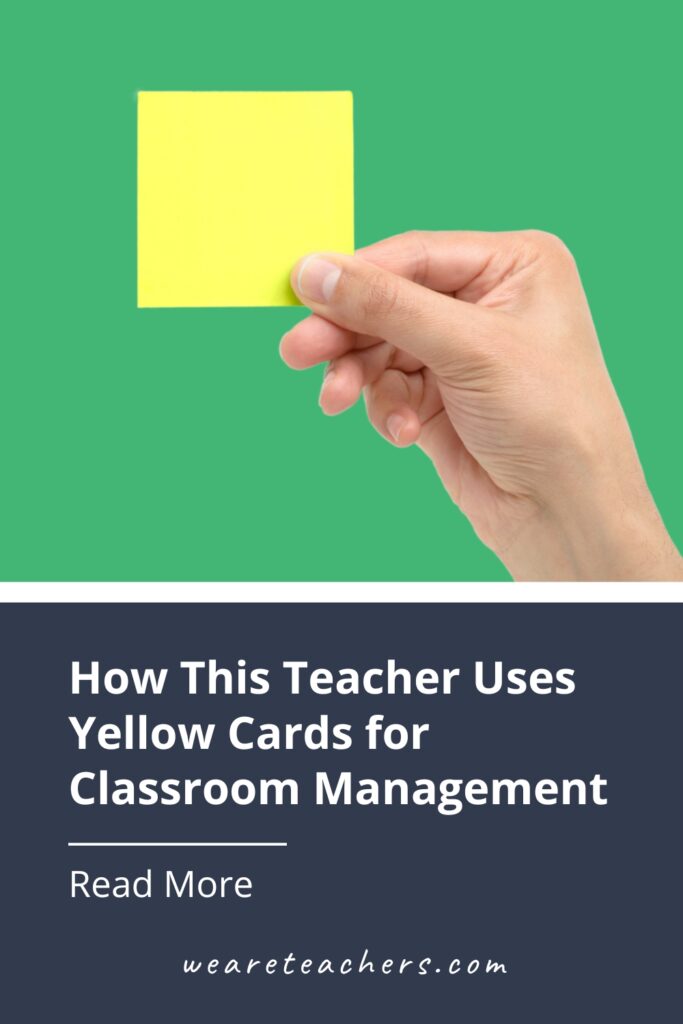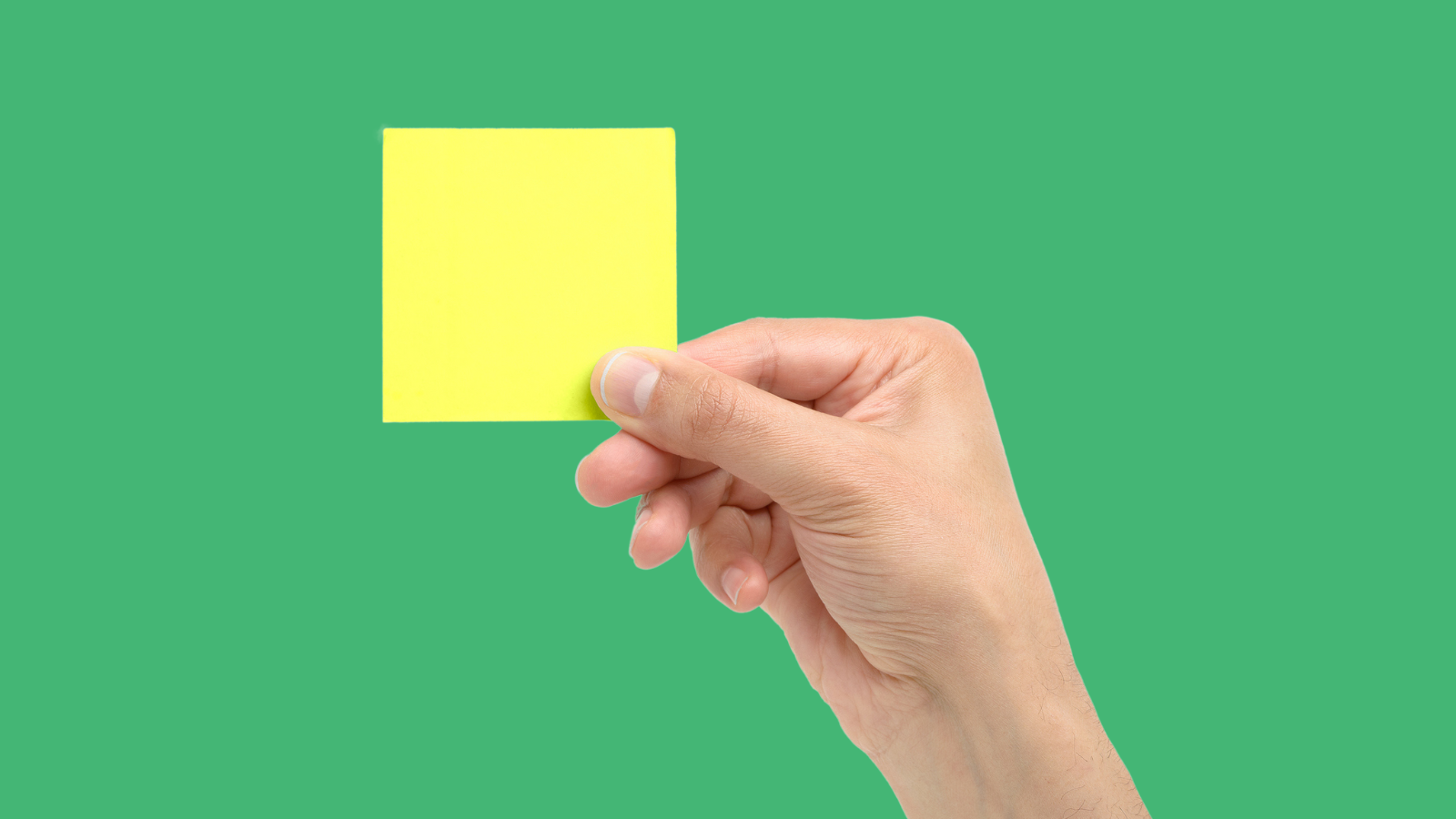Recently, I stood at the front of my classroom, giving instructions for an assignment. When I asked for questions, a student raised his hand to ask something that I’d already gone over. Before I could respond, a friend of his shouted out, “She already answered that! That’s a yellow card!”
I’d heard bits and pieces of the yellow card strategy one of the teachers on my team had implemented in her classroom. But to hear a student apply the system in the context of another class further piqued my interest. After all, the need to repeat directions is one of the banes of any teacher’s existence. And those daily questions? The “what time is lunch?” or “where do I turn this in?” They can make even the calmest teacher’s blood boil. I needed to take a closer look at yellow cards.
The origin of the yellow card
In talking to 7th grade language arts teacher Christina Herrick, I learned about how and why she began using yellow cards in her classroom. In reflecting on her motivations for the system, Christina shares, “I noticed that students were relying on me to solve problems that I knew they could solve themselves. For example, finding supplies, identifying which resources they can use, what to do next, etcetera.”
Did you find yourself nodding in agreement? These are pretty typical questions in the middle school classroom—but that doesn’t make them any more welcome. Rather than live with the annoyance, Christina took matters into her own hands. Enter: the yellow card.
Giving out yellow cards
A yellow card, I found out, was nothing more than a piece of yellow scrap paper given to a student who asked a question they had the resources to answer on their own. “I started by ‘yellow carding’ students on a one-on-one basis,” Christina shared. Her script for delivering a yellow card was along the lines of, “I am giving you this yellow card because I know you can solve this on your own. What resource could you use to help you solve it?”
That’s it. There’s no documentation of who has earned yellow cards, accumulation of yellow cards to earn a larger consequence, or communication to families. And unlike the highly controversial clip chart, there is no public display of yellow cards. Asking an answerable question is the sole reason for a yellow card. It isn’t intended to manage other behaviors, be used as a punitive measure, or used with students with IEPs or 504s related to executive functioning. Christina emphasizes the importance of students realizing yellow cards are not a punishment. She shared that when students were able to find the answer to their question, she “followed it up with LOTS of positive praise!”
Once the system was in place, Christina began to give yellow cards non-verbally. The paper spoke for itself, and students knew they were responsible for finding the answer themselves.
Do yellow cards really work?
So, does this system work? And could it actually lead to a reduction in students asking redundant questions in your classroom?
Both Christina and her students have seen a positive change in the classroom since the implementation of yellow cards. And while the occasional already-answered question still pops up, Christina reports they have significantly declined. She reports that students “are much more reflective and try to solve their own problems before asking for help, raising their hands, or approaching me. They don’t want yellow cards and try to avoid them at all costs! The biggest impact has been the metacognitive reflection students are pausing to use before asking questions. They are asking themselves, ‘can I solve this myself?’ before instantly asking!”
Getting students involved
After seeing the positive response to yellow cards, Christina tweaked the system to promote student involvement. In some class periods, she has handed off the responsibility of issuing yellow cards to students. While this might create a concern of abuse of power, Christina reports this isn’t the case.
“After a month or so,” she shares, “some students became ‘yellow card’ officers and would hand out yellow cards to students who needed them. Others became ‘teaching assistants’ who were students identified as GREAT experts to help solve problems.”
The students entrusted with this responsibility take it seriously. It also means they are especially attentive during directions and well versed in classroom routines and procedures. For students who want the coveted job of yellow card officer or teaching assistant, they must first demonstrate their competency in following directions and adhering to expectations.
If you identify with the struggle of managing redundant questions from your middle schoolers, or are looking for a way to encourage self-sufficiency, yellow cards might have a place in your classroom!
Looking for more articles like this? Be sure to subscribe to our newsletters!


